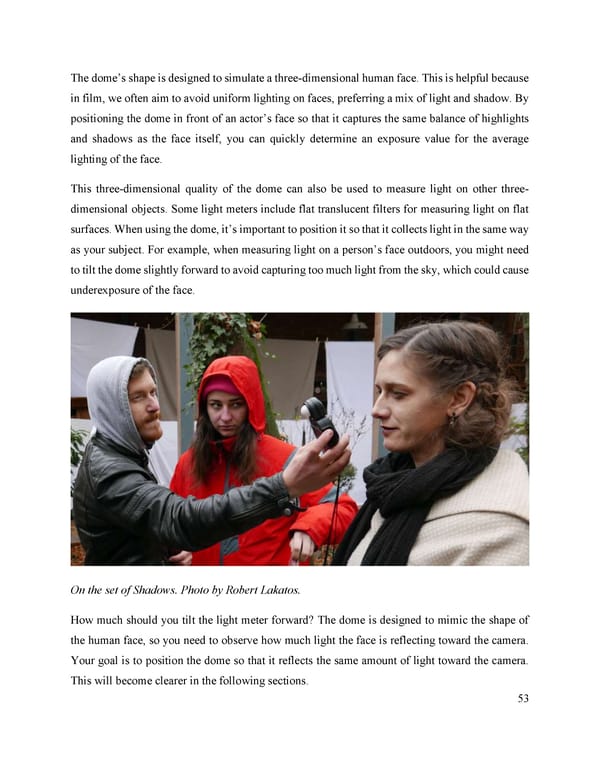The dome’s shape is designed to simulate a three-dimensional human face. This is helpful because in film, we often aim to avoid uniform lighting on faces, preferring a mix of light and shadow. By positioning the dome in front of an actor’s face so that it captures the same balance of highlights and shadows as the face itself, you can quickly determine an exposure value for the average lighting of the face. This three-dimensional quality of the dome can also be used to measure light on other three- dimensional objects. Some light meters include flat translucent filters for measuring light on flat surfaces. When using the dome, it’s important to position it so that it collects light in the same way as your subject. For example, when measuring light on a person’s face outdoors, you might need to tilt the dome slightly forward to avoid capturing too much light from the sky, which could cause underexposure of the face. On the set of Shadows. Photo by Robert Lakatos. How much should you tilt the light meter forward? The dome is designed to mimic the shape of the human face, so you need to observe how much light the face is reflecting toward the camera. Your goal is to position the dome so that it reflects the same amount of light toward the camera. This will become clearer in the following sections. 53
 Lost Analogue: Exploring Film, Music, and Interdisciplinary Methods in Education Page 53 Page 55
Lost Analogue: Exploring Film, Music, and Interdisciplinary Methods in Education Page 53 Page 55